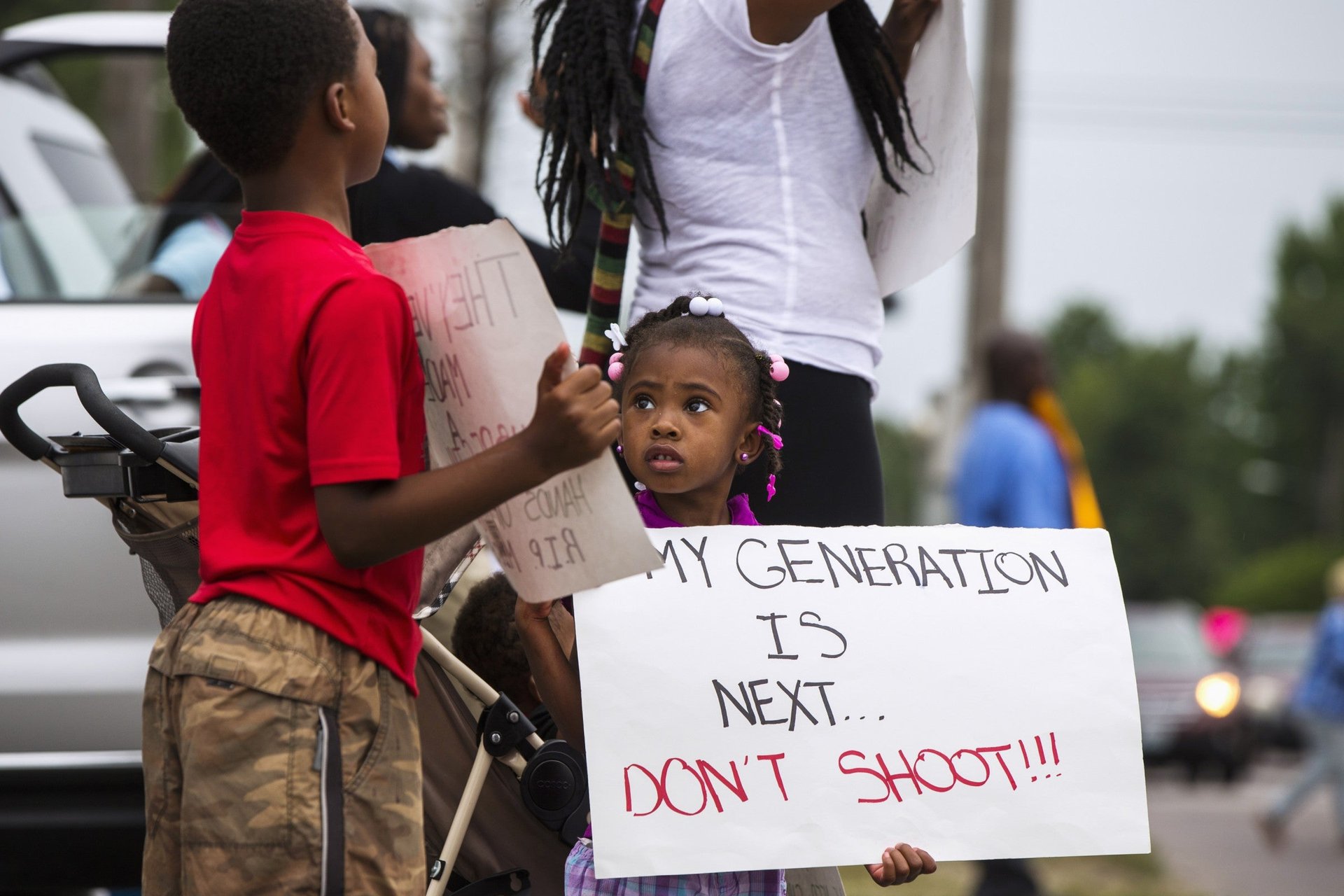In Pakistan and Ferguson, the real risks of bringing children to protests became clear this week
In Pakistan’s capital, Islamabad, and in Ferguson, Missouri, in the United States, daily protests have brought life to a standstill this week. In both places, children at mass public demonstrations have become a poignant part of the narrative, and their presence has emphasized the vulnerability of the crowds in the face of heavily armed security forces.


In Pakistan’s capital, Islamabad, and in Ferguson, Missouri, in the United States, daily protests have brought life to a standstill this week. In both places, children at mass public demonstrations have become a poignant part of the narrative, and their presence has emphasized the vulnerability of the crowds in the face of heavily armed security forces.
On Tuesday, the sixth day of nationwide anti-government protests that have swept Islamabad, opposition leaders breached the heavily guarded Red Zone, where prime minister Nawaz Sharif’s official residence is, after Sharif did not step down as they had demanded.
The move, by Imran Khan of the Pakistan Tehreek-e-Insaf (Pakistan Movement for Justice or PTI) and the Pakistani-Canadian cleric Dr. Muhammad Tahir-ul-Qadri of the Pakistan Awami Tehreek (PAT) party, stirred controversy across the country. According to PTI’s own Twitter feed and several news reports, the thousands of supporters entered with children at their side. Given that the area was guarded by riot police and paramilitary forces, the prospect for violence was very real, and government officials immediately rushed to condemn the decision. One official called it “inhuman” and accused Khan and the PTI leadership of using the children as a human shield.
It is impossible to say what role the presence of children played, nor whether the armed forces would have fired upon or otherwise clashed with the largely unarmed crowd, had there been no children among them. In any case, the protest has so far remained peaceful. Both Khan and Qadri had asked their supporters to strictly remain non-violent, and not to breach the diplomatic enclave.
Meanwhile, across the world in Ferguson, Missouri, in the United States, the situation has been quite different. Police there have been accused of using excessive force against unarmed protesters. Outfitted in riot gear and armored trucks and using tear gas, smoke grenades, and rubber bullets to disperse the crowds, the small St. Louis suburb has been turned into a de facto war zone. Despite the violence, however, parents have brought children to the demonstrations, which were sparked by the murder of local unarmed teenager, Michael Brown on Aug 9.
[protected-iframe id=”fe918ef555fc861bc30a83f7d9deb60b-39587363-67848330″ info=”//instagram.com/p/r0lQoZpnaL/embed/” width=”612″ height=”710″ frameborder=”0″ scrolling=”no”]
According to the St. Louis Dispatch, children have attended several daytime rallies in Ferguson, which have turned violent in the evening. On Sunday, the first case of an injury to a child was reported. Two children were treated for tear gas exposure at a local hospital.
In both Islamabad and in Ferguson, the situation is still very fluid and continues to play out on a daily basis. What both bring into view, however, is the age-old debate over whether to bring children to protests. One mother spoke with the Huffington Post about her misgivings, and her reasoning for bringing her 6-year-old and 2-year-old sons to the protests in Ferguson:
“My boys are adorable … white ladies say that all the time, but I know they won’t always be ‘adorable,’” Pierson told The Huffington Post. “When they’re 17, people might see them as threats and clutch their purses.”
“It was important for them to be there,” she added. “When they look back, in 10 years or five years, I want them to know they were there.”